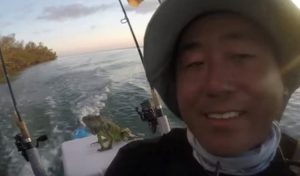The public is invited to join the Delaware Center for the Inland Bays’ upcoming Citizens Advisory Committee – Citizens Café Thursday, April 15, to learn about the state of coastal Delaware’s wetlands and water quality.
The meeting will be held on Zoom starting at 6 p.m. Pre-registration is required. To sign up, go to inlandbays.org/events/citizens-advisory-committee/.
The Inland Bays watershed is home to a variety of wetlands, which are ecosystems that are seasonally or permanently wet and characterized by specific vegetation and soils. They are commonly found along waterways such as rivers or creeks, but can also be found farther inland within coastal forests. Wetlands play critical roles in providing habitat for many coastal species, but also offer vital services such as filtering pollution from runoff, capturing carbon and storing water during flood events.
Unfortunately, a large percentage of Delaware’s wetlands have been lost in the last century due to land use changes, sea level rise and erosion. Wetland losses can have serious implications for Delawareans. Wetland loss can lead to less natural flood protection during coastal storms and detrimental impacts to commercially valuable fishery species that rely on wetlands for habitat, such as the blue crab.
Guest speaker Alison Rogerson, with the Delaware Department of Natural Resources and Environmental Control, will discuss the connection between water quality and wetlands in a presentation that explores wetland changes over the last decade. She will also update the public on a 2017 wetland mapping effort that allows researchers to identify changes in local wetlands, identify local hotspots of wetland changes due to development and coastal erosion and the trend in a loss of forested wetlands and an increase in stormwater ponds.
“Wetland health and water quality are inherently entwined to each other. To ignore wetlands is to make the Inland Bays less fishable, swimmable and enjoyable,” Rogerson said. “If we prioritize wetlands, we can protect the valuable waters we love and need.”
Rogerson is an environmental scientist with DNREC’s Division of Watershed Stewardship’s Watershed Assessment and Management Section. She also is co-chair of the Delaware Living Shoreline Committee and the lead scientist for Delaware’s Wetland Monitoring and Assessment Program.
Zachary Garmoe, the center’s science technician, will join the conversation to explain the importance of healthy waters and how and why the center measures the quality of the water in the Inland Bays. He’ll also share some insight on and future goals to expand the Center’s continuous water quality monitoring efforts, in which large amounts of water quality data are collected by high-tech underwater devices called sondes.





